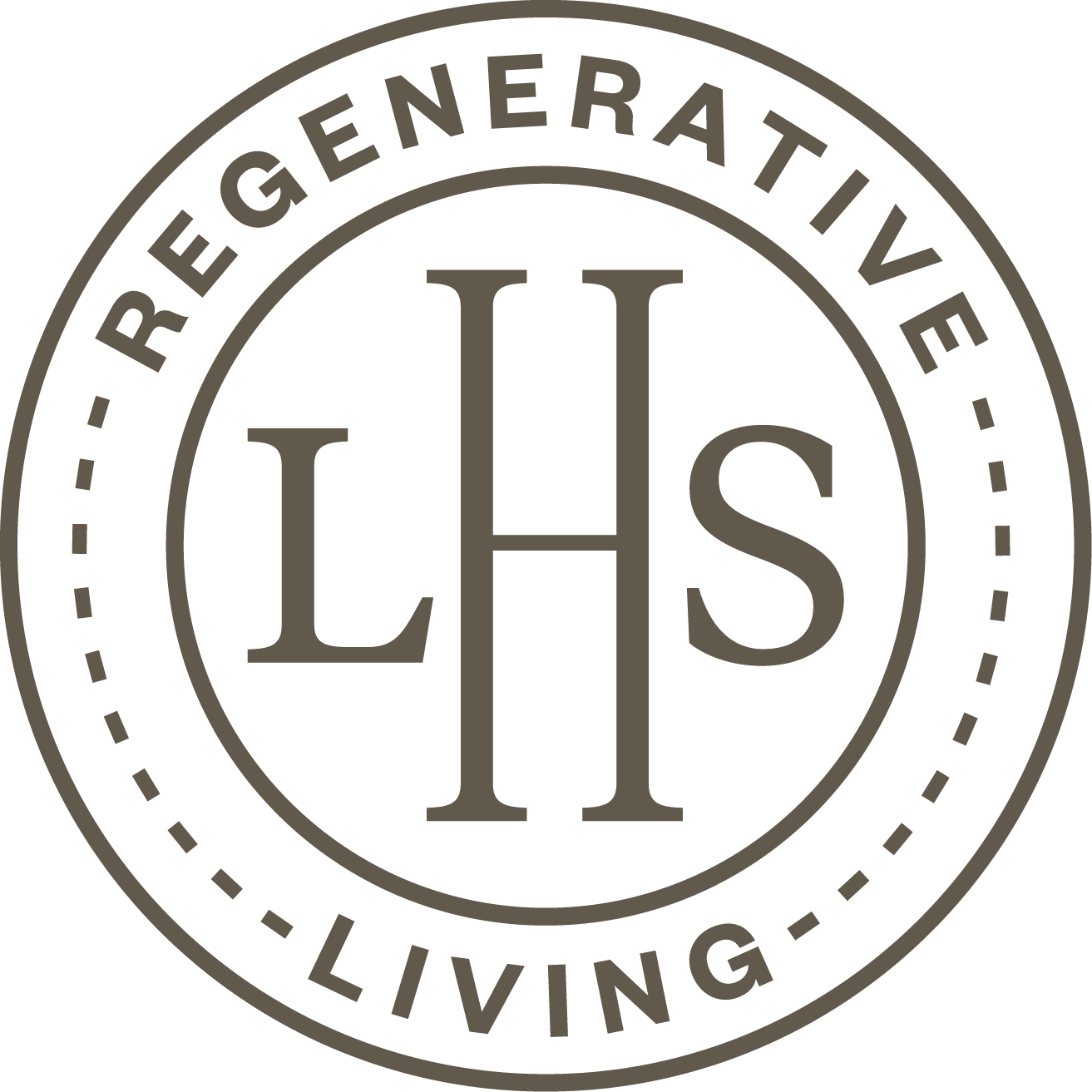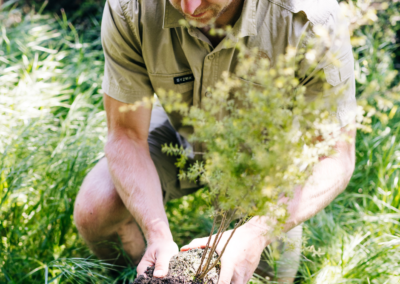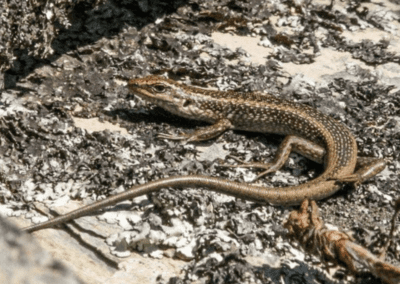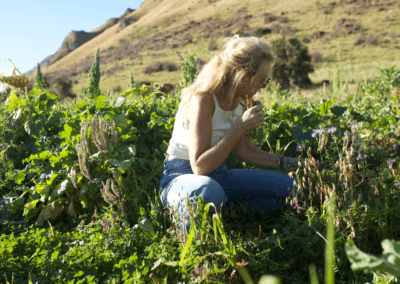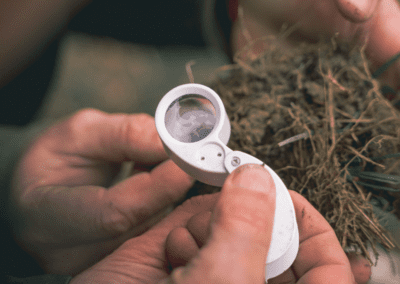Lake Hāwea Station (LHS) is home to over 300 species including 10 endemic and 8 native birds. We are doing everything to ensure farming is part of the climate and biodiversity crisis solution. We are proud to be custodians over a large area of land and it is our duty to make sure we improve the biodiversity value, water quality and sequester carbon on Lake Hāwea Station every year.
To sequester more carbon from this world than we emit into it is the single biggest Koha we can make to the world. We have embedded a whole new level of science for climate action. We measure all our emissions, including transportation hours, waste, and stock. We map all our existing and newly planted vegetation to confirm we are moving the dial towards our ultimate goal of 10x climate positive. We must remain accountable, and there is no time to waste … our planet is in distress. We’ve turned to emerging science that uses remote sensing and artificial intelligence to measure the volume of carbon sequestered from our native forest through our partner CarbonCrop.
We have also baselined our soil carbon stocks in 2023 and expect to be able to include soil carbon in our emissions budget in 2028. We are also actively looking at pasture types and seaweed, which will reduce stock methane emissions. These areas will keep moving our climate-positive dial in the right direction. For us, this is exciting but just the first step. We will keep pushing to learn, apply, and do better. Our commitment to sequester more than we emit and lead with high efficacy sustainability and transparency.


Lake Hāwea Station (LHS) is committed to climate action and transparency in our carbon budgeting. This is a short explainer to share what we are doing to ensure double counting is avoided.
LHS had our carbon position audited by Toitu, revealing 2516.1 tonnes of CO2 equivalent emissions and 4958 tonnes of sequestration for July 2019-July 2020. LHS has also privately calculated a budget within 5% of these figures. This made LHS climate-positive; although we received certification from Toitu, they could not provide a farm-level climate-positive rating. This was the certification that made LHS the first certified carbon zero farm in Australasia.

We now use a different assessment framework with AgVice providing our farm emissions budget and CarbonCrop providing our farm sequestration budget. CarbonCrop uses artificial intelligence and remote sensing to measure, monitor and verify carbon sequestration. CarbonCrop provides ongoing monitoring, reporting and assurance of our carbon removals and help facilitate the sale of some of our carbon removal on the voluntary and compliance carbon markets.
Our gross emissions position for June 2023 – June 2024 is;
- Emissions – 2,988 T CO₂e
- Sequestration – 4,319 T CO₂

While our farm emissions are calculated from mid year – mid year, our sequestration is calculated via calendar years. Therefore we assign our 2023 calendar year sequestration to the following farm year. It is important to note that the above is not our net position, given we sell some of our sequestration as carbon credits and assign some to our wool as insetting. However our exact net position is a live number given we may still in the future sell some of our sequestration from 2023.
We believe it is important we don’t double count any of our sequestration and have rigorous systems in place with CarbonCrop to assure this. However we also believe it is equally important we don’t double count our emissions with our wool and meat customers. All of our farm emissions are being also counted by our customers. Therefore our personal carbon positive claim is a gross claim rather than a net claim, an important distinction.

LHS also believes that it is important to realise carbon neutrality in farming systems is an arbitrary number. Carbon budgets should be measured by comparing the carbon balance of a man-made system with that of the natural system state. For example, a farm with high rainfall and lots of marginal land with considerable regeneration may have a favourable carbon budget (i.e., climate positive by sequestering more than they emit), but this sequestration may be considerably less than the natural state of the farm with high native forest cover. Credits should still be given where they are due. However, this is important as NZ farmland was historically a massive carbon sink in Native Forest, so carbon neutrality should not be considered the end goal for all farms.

Please feel free to ask any questions on how we are tackling climate change and to access our emissions reports. Stay tuned for more news on climate action in farming!
‘Ex-skinked’ How farming and ecotourism are helping in the fight for the last Western Grand Skinks
In 2011, as the Western Grand skink edged to the brink of extinction in the wild, the Department of Conservation launched a last-ditch mission to capture the last few remaining skinks. They caught what they believed to be the last few on Lake Hawea Station and took them to a breeding facility in the hope they would reproduce. Unfortunately breeding in captivity had limited success and their future fate in the wild looked uncertain.
For eight years it was unknown if Western Grand Skinks had survived in the wild. Then in April 2019, having recently heard of their plight I organized an expedition to search to see if there were any that had survived the last eight years. Lead by Dr. Carey Knox, aka Dr. Skink/ skinkman, myself and 16 undergraduate students from the USA ventured out to see if any remained.
On the first day of searching, we were devastated to have not found any. However, there was still hope, as the cryptic nature of skinks makes them very elusive. Late on the second day, jubilation, Carey had found one! On the third day we had refined our research area and found a further 18 skinks and one juvenile. We were thrilled, the Western Grands weren’t ‘ex-skinked’.
However, 19 individuals were still dangerously close to extinction, we knew that while they had survived these last years they were still highly at risk from all sorts of predators; cats, hedgehogs, mice, stoats, ferrets and rats. So, we got trapping. In our most recent survey in April 22 we found close to 40 adult Skinks. They were alive – and better still, breeding (more juveniles were found). The population that was once left for dead has become viable – it is growing.
